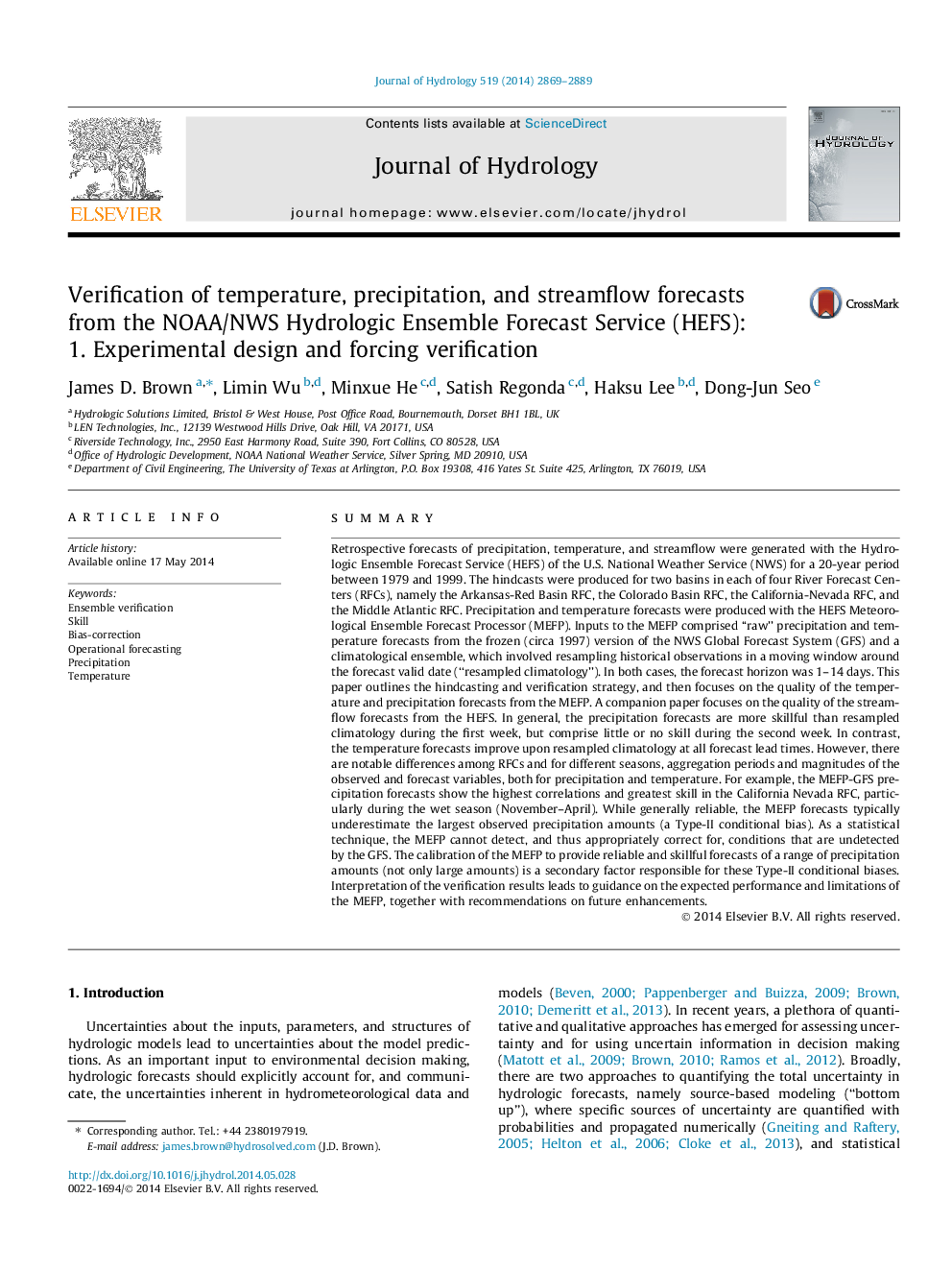| کد مقاله | کد نشریه | سال انتشار | مقاله انگلیسی | نسخه تمام متن |
|---|---|---|---|---|
| 6412146 | 1332897 | 2014 | 21 صفحه PDF | دانلود رایگان |

- The Hydrologic Ensemble Forecast Service is an operational forecasting system.
- Forcing and streamflow hindcasts are produced and verified for selected headwaters.
- This paper summarizes the verification results for temperature and precipitation.
- The precipitation forecasts are generally skillful, but show some conditional biases.
- The temperature forecasts are skillful and, in general, unbiased.
SummaryRetrospective forecasts of precipitation, temperature, and streamflow were generated with the Hydrologic Ensemble Forecast Service (HEFS) of the U.S. National Weather Service (NWS) for a 20-year period between 1979 and 1999. The hindcasts were produced for two basins in each of four River Forecast Centers (RFCs), namely the Arkansas-Red Basin RFC, the Colorado Basin RFC, the California-Nevada RFC, and the Middle Atlantic RFC. Precipitation and temperature forecasts were produced with the HEFS Meteorological Ensemble Forecast Processor (MEFP). Inputs to the MEFP comprised “raw” precipitation and temperature forecasts from the frozen (circa 1997) version of the NWS Global Forecast System (GFS) and a climatological ensemble, which involved resampling historical observations in a moving window around the forecast valid date (“resampled climatology”). In both cases, the forecast horizon was 1-14Â days. This paper outlines the hindcasting and verification strategy, and then focuses on the quality of the temperature and precipitation forecasts from the MEFP. A companion paper focuses on the quality of the streamflow forecasts from the HEFS. In general, the precipitation forecasts are more skillful than resampled climatology during the first week, but comprise little or no skill during the second week. In contrast, the temperature forecasts improve upon resampled climatology at all forecast lead times. However, there are notable differences among RFCs and for different seasons, aggregation periods and magnitudes of the observed and forecast variables, both for precipitation and temperature. For example, the MEFP-GFS precipitation forecasts show the highest correlations and greatest skill in the California Nevada RFC, particularly during the wet season (November-April). While generally reliable, the MEFP forecasts typically underestimate the largest observed precipitation amounts (a Type-II conditional bias). As a statistical technique, the MEFP cannot detect, and thus appropriately correct for, conditions that are undetected by the GFS. The calibration of the MEFP to provide reliable and skillful forecasts of a range of precipitation amounts (not only large amounts) is a secondary factor responsible for these Type-II conditional biases. Interpretation of the verification results leads to guidance on the expected performance and limitations of the MEFP, together with recommendations on future enhancements.
Journal: Journal of Hydrology - Volume 519, Part D, 27 November 2014, Pages 2869-2889